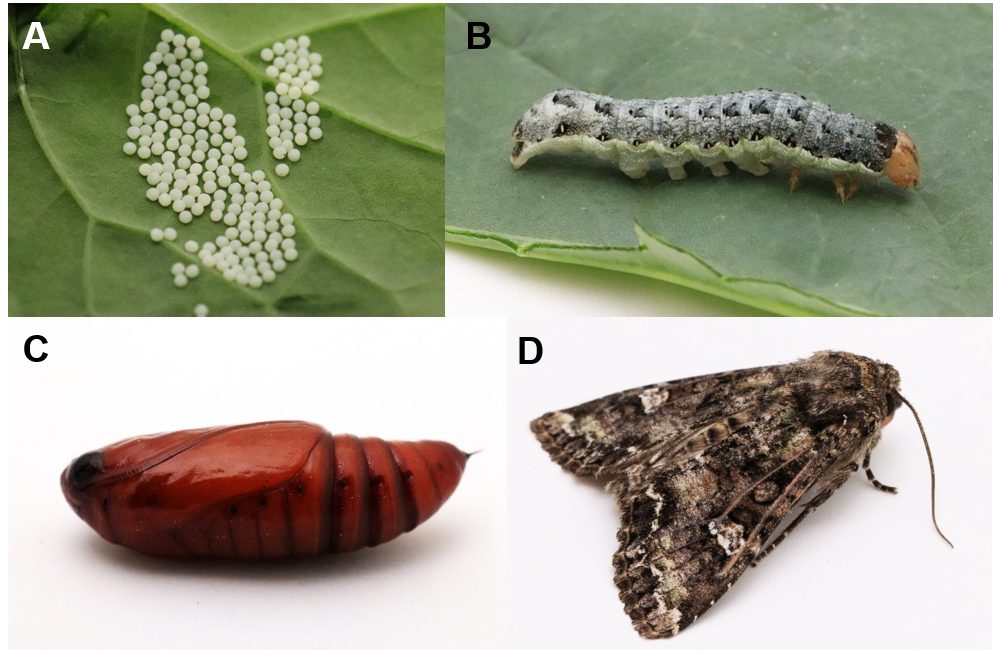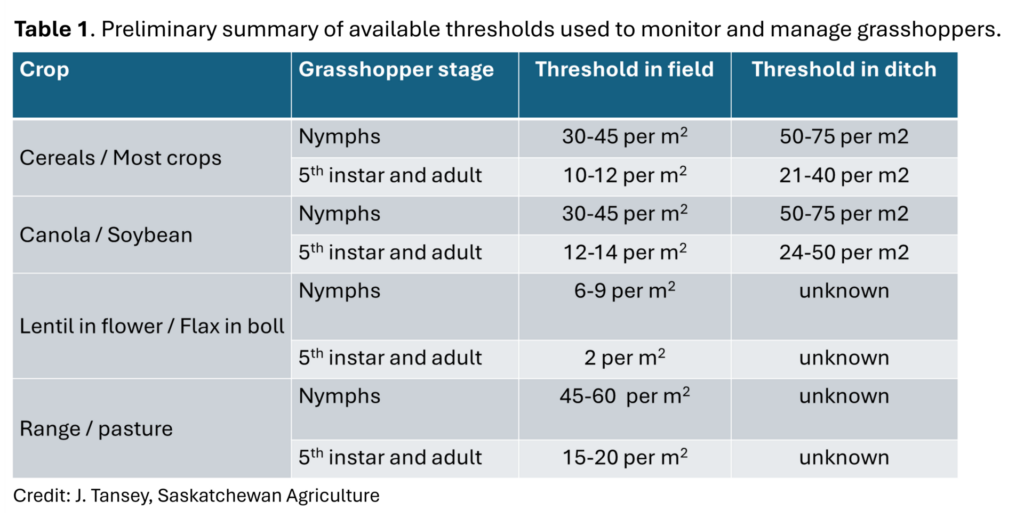Prairie-wide provincial entomologists provide insect pest updates throughout the growing season. Follow the hyperlinks to readily access their information as the growing season progresses:
MANITOBA’S Crop Pest Updates for 2024 are available. Access the August 15, 2024 report (or access the PDF copy). Bookmark the insect pest homepage to access fact sheets and more! Highlights reported by Dr. J. Gavloski include:
• Aphids – “Soybean aphids levels are high in some areas” with “insecticides applied to a few soybean fields in the Eastern region” but “a lot of lady beetles” have been reported from some soybean fields. The report includes photos of lady beetle larvae to help producers identify sevenspotted, multicoloured Asian, thirteenspotted, and sevenspotted larvae. An action threshold for soybean aphids (R1-R5 growth stages) is an average of >250 aphids per plant but is no longer applicable past the R5 stage. Access the Manitoba Pulse Growers “soybean growth staging guide” to differentiate plant stages.
• Other aphid predators – Photos of a hover fly larva, damsel bug adult, green lacewing larva, and minute pirate bug adult are featured in the report.
• Grasshoppers – The annual grasshopper survey is underway now. Interested participants can find the protocol, data sheet, and steps to submit data in the newly updated protocol.
SASKATCHEWAN’S Crop Production News is back for the 2024 growing season! Access the online Issue #7 report. Bookmark their insect pest homepage to access important information! Also access the Crops Blog Posts that released a grasshopper activity update (June 2024), announced registration for the Crop Diagnostic School 2024 but also posts help for scouting fields for wireworms (May 2024), grasshopper identification: pest or not (Apr 2024), a summary of wheat midge populations and management (Mar 2024), and a description of pea leaf weevil populations (Feb 2024).
ALBERTA’S Insect Pest Monitoring Network webpage links to insect survey maps, live feed maps, insect trap set-up videos, and more. There is also a Major Crops Insect webpage. Remember, AAI’s Agri-News occasionally includes insect-related information, e.g., diamondback moth and bertha armyworm (August 6, 2024); aphids in field crops, canola flower midge scouting (July 29, 2024); assessing and a description of missing pods on canola (July 22, 2024); scout for wheat midge (July 15, 2024); the right canola crop stage to spray for lygus bugs (July 8, 2024); soil moisture, wheat midge and other insect pests (June 24, 2024); scout for grasshoppers and other insect pests (June 17, 2024); how to manage stem feeding from flea beetles, keep canola bins malathion-free, scout for grasshoppers and other pests (June 10, 2024); scout for insect pests (June 3, 2024); scout for grasshoppers (May 27, 2024); flea beetle control (May 6, 2024); cereal insect pests, latest on insects in canola, and post-emergence wireworm scouting (May 13, 2024).
• Wheat midge monitoring – Cumulative counts arising from weekly data are available so refer to the Live Map (as of August 1, 2024).
• Cabbage seedpod weevil monitoring – Sweep-net count data can be reported here then the data populates the Live Map (as of August 8, 2024).
• Diamondback moth monitoring – Cumulative counts arising from weekly data are available so refer to the Live Map (as of July 4, 2024). Remember to scout fields for larvae.
• Bertha armyworm pheromone trap monitoring – Cumulative counts arising from weekly data are available so refer to the Live Map (as of August 8, 2024). Remember to scout fields for larvae.



